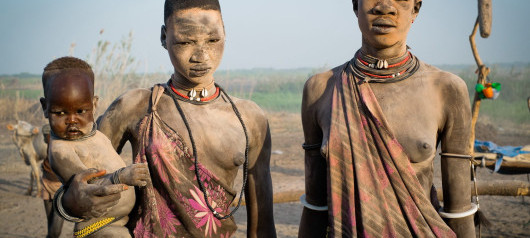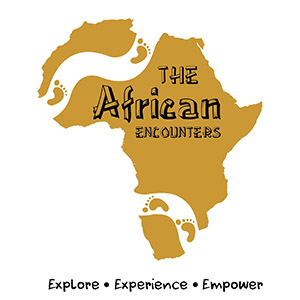SOUTH SUDAN’S EMERGENCE AS A UNIQUE TRAVEL DESTINATION
South Sudan, the world’s youngest country, is a land of untold potential, a destination for the adventurous, and a place rich in culture and history. Though often overshadowed by its more established neighbors, South Sudan safaris are steadily emerging as an attraction for travelers seeking an authentic, off-the-beaten-path experience. From vast savannahs and wetlands to diverse wildlife and the resilient spirit of its people, South Sudan offers a unique adventure for those willing to explore it.
A Brief History of South Sudan’s Tourism
South Sudan gained independence from Sudan in 2011, and its tourism industry is in the early stages of development. While political instability and conflict have affected the country in recent years, there are signs of recovery and a renewed focus on promoting South Sudan as a tourist destination. Before the country’s civil conflict, South Sudan had started to attract a niche group of tourists interested in exploring its wildlife, culture, and history.
Today, South Sudan is positioning itself to reclaim its place on the global tourism map. The country offers a wealth of natural beauty, cultural diversity, and opportunities for adventure that are unmatched in the region. For those seeking to experience a less-explored part of Africa, South Sudan represents a frontier of opportunity.
Why South Sudan Safaris?
1. Diverse Wildlife and National Parks
South Sudan is home to a number of national parks and reserves that are teeming with wildlife. These protected areas provide some of the last remaining habitats for endangered species and serve as a sanctuary for Africa’s iconic wildlife.
One of the crown jewels of South Sudan’s natural attractions is Boma National Park, which lies in the southeastern part of the country. Spanning over 22,000 square kilometers, Boma is one of Africa’s largest national parks and offers a rich diversity of flora and fauna. The park is home to vast herds of antelopes, giraffes, zebras, and elephants, as well as the endangered White-Eared Kob and the Boma Gazelle.
In the north of the country, Bandingilo National Park is another wildlife haven, with populations of lions, buffaloes, and hippopotamuses. The park is also known for the Bandingilo Plateau, a lush area that is ideal for wildlife safaris and birdwatching.
South Sudan safaris offer an untamed wilderness that is still relatively untouched by mass tourism. For the nature lover or safari enthusiast, these areas are an opportunity to explore the wild heart of Africa, often without the crowds you might find in more established safari destinations.
2. The Sudd Wetlands
The Sudd, one of the largest wetlands in the world, is a must-see for visitors interested in birdwatching or experiencing an incredibly unique ecosystem. This vast network of swamps and marshes is formed by the White Nile River and covers a massive portion of South Sudan’s landscape.
The Sudd is home to over 400 species of birds, making it a premier destination for birdwatching enthusiasts. The wetlands attract large populations of migratory birds, including cranes, pelicans, and waterfowl. Visitors can take boat trips or guided excursions through the marshes, observing the incredible variety of birdlife and other animals that inhabit the area, such as hippopotamuses, crocodiles, and dugongs.
The Sudd's landscapes, with their expansive waters and grasslands, offer a tranquil and visually stunning experience for nature lovers.
3. Cultural and Historical Heritage
South Sudan is home to over 60 ethnic groups, each with its own rich history, traditions, and cultural practices. The country’s diverse tribes include the Dinka, Nuer, Shilluk, Azande, and Bari, all of whom have unique languages, customs, and social structures.
Visitors on South Sudan Safaris have the chance to engage with local communities and experience traditional dances, music, and festivals. The Dinka people, for example, are known for their cattle herding culture, and travelers can witness the important role that cattle play in their daily lives. Nuer and Shilluk tribes have their own vibrant cultural traditions, which visitors can experience through community visits and cultural tours.
South Sudan’s rich history, especially surrounding its struggle for independence, is another key attraction. For history buffs, a visit to the capital, Juba, provides an opportunity to learn about the country’s recent history and its journey to nationhood. Sites like the Juba Museum and various memorials offer insights into the conflict and peace-building process that has shaped the nation.
4. The Resilient Spirit of the People
One of the most remarkable aspects of South Sudan is the resilience and warmth of its people. Despite the challenges the country has faced, South Sudanese are known for their hospitality and deep sense of community. Visitors often find themselves welcomed into homes and communities, where they can share meals, listen to stories, and gain a deeper understanding of the country’s rich cultural fabric.
Travelers in South Sudan will likely encounter a country in transition, one where people are building for the future while honoring their traditions and heritage. The sense of unity and optimism that many South Sudanese feel is palpable, and visitors are often moved by the generosity and hospitality they experience.
5. Adventure Tourism and Off-the-Beaten-Path Exploration
South Sudan is not yet a mass tourism destination, but for adventurous travelers, it offers an unparalleled opportunity for exploration. With its vast landscapes, rivers, and wilderness areas, South Sudan is ideal for those seeking a real African adventure. Visitors can take river cruises along the Nile, embark on wilderness treks through Boma National Park, or visit remote villages where modern tourism infrastructure is minimal.
The Nile River itself offers the opportunity for unique experiences, including boat safaris, fishing, and the chance to interact with local communities that live along its banks.
When to Visit South Sudan
The best time to visit South Sudan is during the dry season, which typically runs from November to April. During these months, the roads are more accessible, and wildlife is easier to spot as animals gather around water sources. The wet season (from May to October) can bring heavy rains, making some areas difficult to reach, but it also brings lush green landscapes and the chance to see migrating birds in the wetlands.
Getting Around South Sudan
South Sudan’s infrastructure is still developing, but domestic flights between key cities such as Juba, Malakal, and Wau are available. For traveling within the country, travelers can use 4x4 vehicles, which are essential for navigating the rugged roads. Hiring a local guide is recommended, as they can provide valuable insights and help navigate the terrain.
For short distances, boda bodas (motorcycle taxis) are common in urban areas like Juba. Public transport options are limited, and private transportation is often the most reliable and comfortable choice for visitors.
Safety and Travel Considerations
South Sudan is still recovering from years of conflict, and travelers should stay informed about the security situation before planning their visit. It’s important to consult travel advisories and check with local tour operators to ensure safe travel. Some areas of the country may still be subject to restrictions or occasional instability, so it’s best to plan your trip with caution and with a tour operator like the African Encounters Limited
Call to Visit South Sudan
South Sudan is a country of extraordinary potential, offering a combination of wildlife, culture, history, and adventure that few other destinations in Africa can match. As the country continues to rebuild and develop its tourism sector, it holds the promise of becoming a major destination for those seeking an authentic African experience off the beaten path.
For adventurous travelers, South Sudan is an emerging frontier, offering opportunities to explore some of Africa’s last great wilderness areas, meet diverse cultures, and engage with a resilient people who are working to build a brighter future.
If you’re looking for a unique, off-the-beaten-path destination that combines adventure with cultural richness, South Sudan may just be the place for you. As the country’s tourism industry grows, now is the time to discover this hidden gem before it becomes a more mainstream destination.





